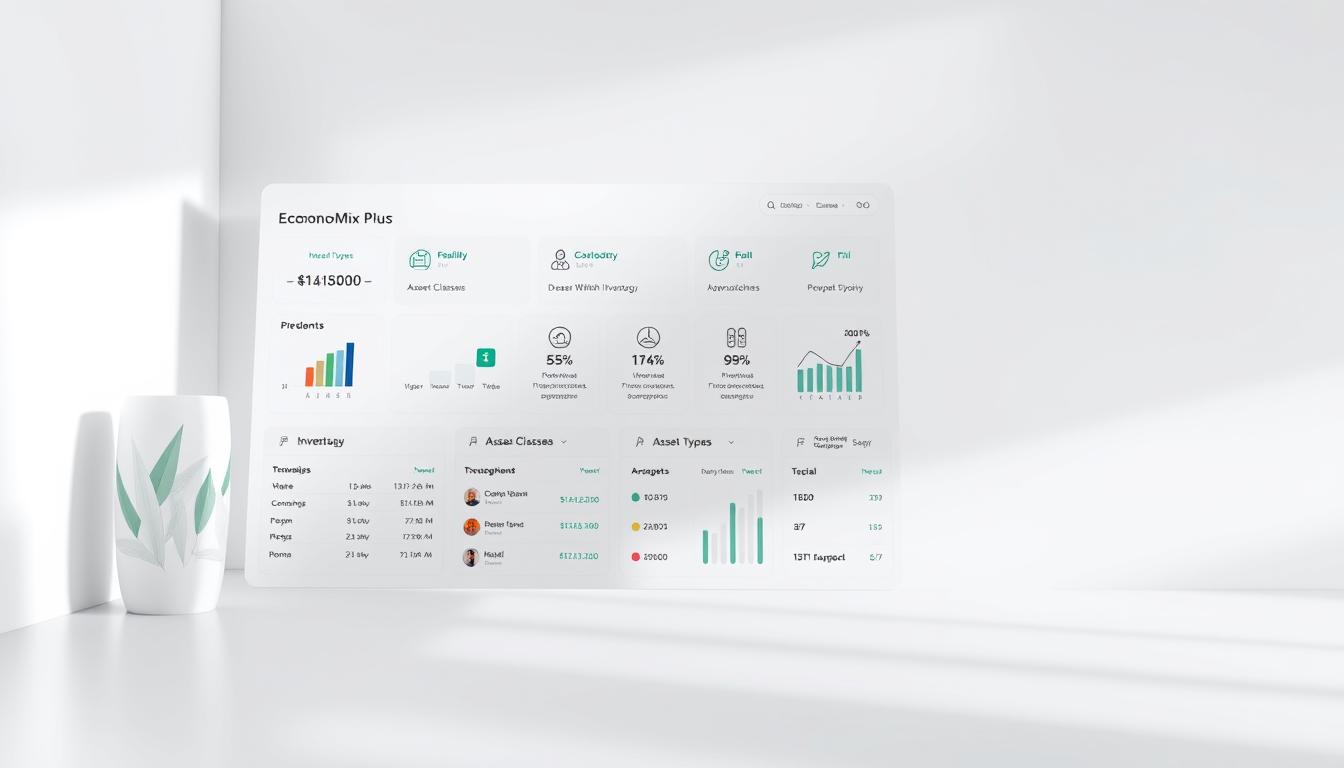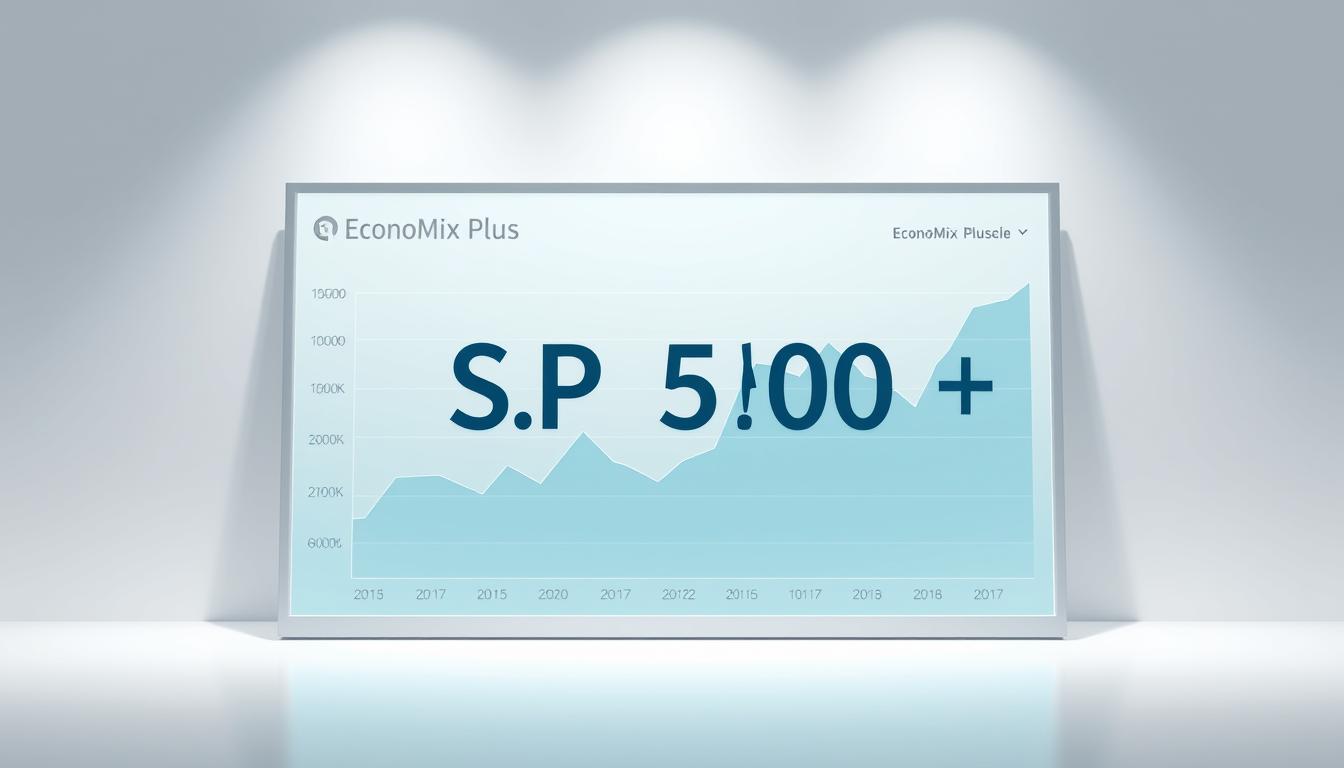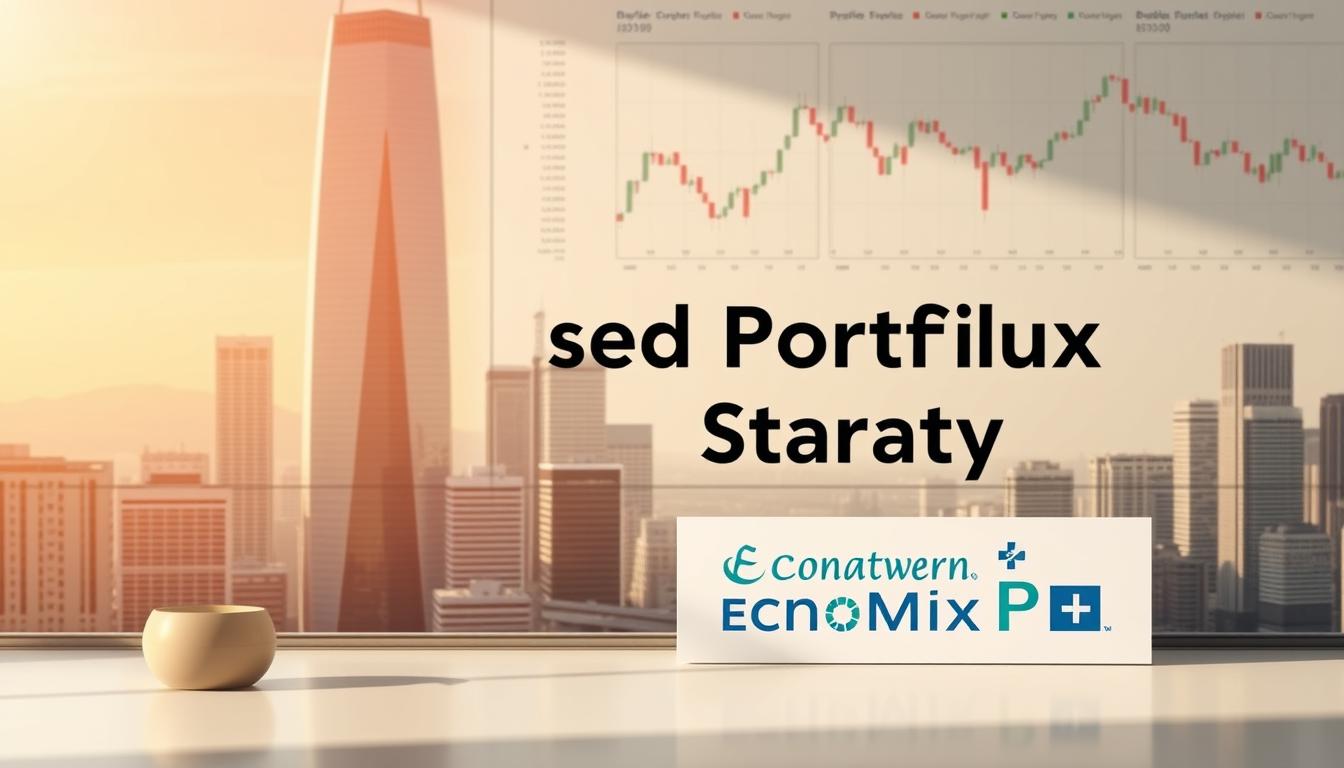What if your living room could become your most powerful financial tool? The digital age has reshaped how wealth is built, turning screens into gateways for growing your money. Gone are the days when Wall Street exclusivity dictated who could profit from the market. Today, strategic investing is accessible to anyone with an internet connection and a willingness to learn.
Starting with modest amounts, disciplined individuals can leverage online platforms to build portfolios that outperform traditional savings. The key lies in combining smart financial planning with consistent action. Tools like real-time data analysis and educational resources empower you to make informed decisions without leaving your couch.
Long-term wealth creation isn’t about luck—it’s about mastering proven strategies. Whether you’re analyzing trends or diversifying holdings, every step matters. This guide breaks down how to turn curiosity into confidence, from selecting your first stocks to optimizing returns over time.
Key Takeaways
- Modern technology makes self-directed investing accessible from any location.
- Small initial contributions can grow significantly with disciplined strategies.
- Online tools provide real-time data for informed decision-making.
- Long-term growth relies on portfolio diversification and trend analysis.
- Financial education reduces risks and increases potential rewards.
Introduction: Embarking on Your Stock Market Journey
Financial empowerment starts when you articulate what success looks like for your portfolio. This involves not just defining monetary targets but also understanding the broader implications of your financial decisions. Before selecting assets or opening platforms, clarity about your objectives shapes every decision. By having a clear vision of what you want to achieve, whether it’s funding a child’s education, purchasing a home, or ensuring a comfortable retirement, you can make informed choices that align with your aspirations.
Money works harder when paired with purpose—whether saving for retirement or building an emergency fund. When your financial goals are rooted in personal values, the journey becomes more meaningful and motivating, guiding you through market fluctuations and challenges.
Understanding Your Financial Goals
Begin by asking: What do these funds need to accomplish? Short-term targets like vacations might require different strategies than long-term wealth growth. Research shows investors who set deadlines for goals achieve them 42% faster than those without timelines.
Follow these steps to refine your plan:
- Quantify each goal (e.g., “$20,000 down payment in 3 years”)
- Calculate monthly contributions needed
- Align risk tolerance with time horizons
“Goals transform abstract numbers into measurable milestones,” notes financial educator Lisa Thompson.
Opening an investment account becomes your launchpad. Many platforms let you start investing with $100 or less, turning spare cash into potential growth engines. Remember: Consistent $50 monthly deposits at 7% annual returns grow to $8,300 in a decade.
Separate money stocks from emergency savings. Allocate funds you won’t need immediately, allowing compound interest to work. This step prevents panic selling during market dips and keeps your strategy intact.
Laying the Foundation with a Solid Financial Plan
Building lasting wealth demands more than wishful thinking—it requires a blueprint. Households with documented financial strategies for their brokerage account triple their net worth compared to those without plans, according to a Northwestern Mutual study. This framework turns vague aspirations into actionable steps while balancing growth and security through smart investments in stocks and understanding the stock market.
By outlining specific financial goals, such as saving for retirement or funding a child’s education, families can create a clear path to achieving these objectives. Moreover, regularly reviewing and adjusting these strategies in response to changing circumstances or market conditions can further enhance their effectiveness. Engaging with financial advisors or utilizing budgeting tools can also provide valuable insights, ensuring that households remain on track and make informed decisions about their investments.
Setting Realistic Investment Goals
Start by defining specific targets: “$15,000 for education in 5 years” works better than “save for college.” Break each goal into monthly contributions using compound interest calculators. A 25-year-old investing $300 monthly at 7% annual returns could amass $500,000 by retirement age.
Assessing Your Risk Tolerance
Your comfort with volatility determines your asset allocation. Online quizzes from firms like Vanguard or Fidelity measure this through questions about time horizons and emotional responses to market swings. Younger investors often handle 80% stocks, while those nearing retirement might prefer 50% bonds.
- Review existing holdings quarterly using portfolio analyzers
- Rebalance when allocations drift 5% from targets
- Use index funds for instant diversification across sectors
Diversified portfolios weather storms better. Research shows spreading investments across 12+ asset classes reduces risk by 40% compared to single-stock bets. Pair this strategy with automatic contributions to build resilience against market dips.
Choosing the Right Investment Account
Your portfolio’s potential hinges on selecting the proper financial vehicle—a decision shaping returns and tax outcomes. Standard brokerage accounts offer flexibility for buying stocks, including popular options like the S&P 500, or ETFs, while specialized options like IRAs prioritize long-term growth through tax benefits for your investments. These brokerage accounts are particularly appealing for investors who value immediate access to their funds, allowing them to buy and sell assets without restrictions. This liquidity can be crucial for those who may need to react quickly to market changes or personal financial needs.
On the other hand, IRAs, whether traditional or Roth, encourage a more disciplined investment approach by imposing contribution limits and penalties for early withdrawals, thereby fostering a focus on retirement savings. The tax advantages associated with these accounts can significantly enhance the growth of your investments over time, making them a vital consideration for anyone looking to build wealth for the future.

Brokerage Account Basics
Traditional brokerage accounts act as gateways to markets with no withdrawal penalties. They suit goals needing liquidity, like saving for a house. Tax-advantaged retirement accounts grow funds faster by deferring or eliminating capital gains taxes.
Compare these types of investment accounts:
- Taxable brokerage: Immediate access, no contribution limits
- Roth IRA: Tax-free growth for qualified retirement withdrawals
- Traditional IRA: Tax-deductible contributions now, taxed later
“Your account type determines whether the IRS becomes your partner or opponent,” explains certified financial planner Mark Reynolds. Platforms like Fidelity or Schwab provide comparison tools showing how different accounts affect net returns over decades.
Prioritize low-fee brokerage accounts with robust research tools when starting. Check for minimum balance requirements and commission structures—these details impact profitability. Remember: A $50 annual fee could erase 10% of a $500 portfolio’s gains.
Align your investment account choices with timelines. Use taxable options for goals under five years and IRAs for objectives beyond a decade. This strategy maximizes tax efficiency while keeping funds accessible when needed.
Learning the Basics of Stock Market Investing
Demystifying market jargon is your first step toward confident decision-making in investing stocks. Grasping core concepts transforms complex charts into actionable insights about various types of investments, helping you navigate financial opportunities with precision and maximize your return on money.

Key Investment Terms Explained
Stocks represent ownership shares in companies. When you buy stocks, you’re purchasing a slice of a business’s future profits. The S&P 500 tracks 500 large U.S. companies, serving as a market health indicator—historically delivering 10% average annual returns.
ETFs (Exchange-Traded Funds) bundle hundreds of assets into single trades. For example, an S&P 500 ETF lets you own fractional pieces of all index companies simultaneously. This approach reduces risk compared to betting on individual stocks.
How Stocks and ETFs Work
Purchasing shares through brokerage platforms connects you to global markets. Index funds automate diversification by mirroring benchmarks like the S&P 500. Vanguard’s S&P 500 ETF (VOO) has returned 200% over the past decade, showcasing passive investing’s power.
Consider this comparison:
- Buying 1 stock: $150 per Apple share
- Buying 1 ETF share: $400 for exposure to 500 companies
This structural difference makes ETFs ideal for beginners seeking balanced growth. “Understanding these mechanics prevents costly mistakes,” states Morningstar analyst Sarah Klein. Master these fundamentals before allocating funds—knowledge compounds faster than capital alone.
Crafting Your Investment Strategy
Think of your portfolio like a well-stocked kitchen—variety ensures you’re prepared for any market climate. A balanced mix of assets acts as your financial safety net while creating growth opportunities. Start by determining what percentage to allocate between aggressive plays and stable holdings based on your timeline.

Building a Diversified Portfolio
Spreading investments across sectors reduces reliance on single performers. Consider splitting funds three ways: growth stocks for potential gains, index funds for steady returns, and bonds for stability. Vanguard research shows diversified portfolios recover 27% faster during downturns than concentrated ones.
Try these allocation methods:
- 60/40 split: 60% stocks, 40% bonds for moderate risk
- Sector rotation: Shift weights quarterly based on economic trends
- Dividend reinvestment: Use payouts to buy more shares automatically
| Approach | Allocation Example | Best For |
|---|---|---|
| Growth Focus | 70% tech stocks, 20% ETFs, 10% cash | Long-term horizons |
| Balanced | 50% S&P 500 ETF, 30% bonds, 20% REITs | 5-10 year goals |
| Conservative | 40% treasury notes, 40% dividend stocks, 20% gold | Near-retirement |
“Diversification isn’t about eliminating risk—it’s about managing it smartly,” says BlackRock strategist Jenna Cole. Test different ways to combine assets using paper trading accounts before committing real funds. Those who adjust allocations annually see 15% higher returns than static portfolios over decade spans.
Your ideal strategy should evolve as life changes. Review holdings each quarter, trimming winners and bolstering underperformers. This disciplined way of investing turns market chaos into calculated progress toward your financial targets.
Exploring Growth Options: Stocks, Index Funds, and More
Navigating growth opportunities requires understanding your tools. Individual company shares offer targeted exposure, allowing investors to focus on specific businesses they believe will outperform the market, often driven by innovative products or strong management teams. On the other hand, index funds spread risk across entire sectors, providing a more diversified approach that can mitigate the impact of poor performance from any single stock. The choice depends on your appetite for research versus stability, as individual stocks may require more time and effort to analyze thoroughly, while index funds typically offer a more hands-off investment strategy that appeals to those seeking lower maintenance. Additionally, considering your investment horizon and risk tolerance is crucial in making this decision.
Assessing Company Potential
Scrutinize earnings reports and debt ratios before buying shares. A stock with consistent revenue growth and manageable liabilities often outperforms flashy competitors. For example, companies maintaining 15% annual earnings increases for five years typically deliver stronger returns than market averages.
Compare these approaches:
- Individual picks: Analyze price-to-earnings ratios below 25 and leadership stability
- Index funds: Track established benchmarks like the S&P 500 for instant diversification
Tech giant Apple exemplifies balanced fundamentals—its 28% profit margin and $100 billion R&D budget signal enduring potential. Contrast this with speculative startups lacking proven earnings histories.
“Quality stocks act as portfolio engines, but index funds provide shock absorbers,” advises Fidelity strategist Rachel Nguyen.
Higher-risk stocks demand ongoing monitoring. Allocate no more than 20% of holdings to single companies if pursuing aggressive growth. Pair these with broad-market ETFs to maintain strategic asset allocation while chasing upside potential.
Mastering the Art of Long-Term Investing
Patience becomes your greatest asset when building wealth through markets. Compound growth transforms modest holdings into significant sums—$10,000 invested at 10% annual returns becomes $67,000 in 20 years. This time-fueled magic works best when emotions stay in check and strategies remain steady.
Embracing the Buy and Hold Strategy
The most celebrated investors treat portfolios like oak trees, not seasonal crops. Warren Buffett’s Berkshire Hathaway has held Coca-Cola shares since 1988, generating 2,000% returns. Research shows staying fully invested for 20 years delivers 85% higher gains than missing just the 10 best market days.
Three steps fortify your resolve during volatility:
- Set automatic contributions to buy more shares when prices dip
- Review holdings annually instead of daily
- Rebalance allocations only when drifting 5% from targets
“Our favorite holding period is forever,” Buffett reminds shareholders. “Widespread fear is your friend if you keep cash ready.”
Consider this: The S&P 500 survived 27 corrections since 1950 yet still averaged 10% yearly growth. Investors who held through every downturn saw their portfolio value multiply 120-fold over seven decades. Your long-term focus turns temporary dips into buying opportunities rather than threats.
Can you become a successful stock market investor from home
Modern portfolio-building thrives on routine. Investors who automate contributions and stick to plans see 73% higher returns over 10 years compared to reactive traders. Platforms like Vanguard report accounts under $10,000 often outperform larger portfolios when owners prioritize steady growth over speculation.
Three principles separate lasting success from short-lived gains:
- Reinvest dividends to accelerate compounding
- Update strategies quarterly using free analyst reports
- Limit individual stock picks to 20% of holdings
| Strategy | Time Commitment | 5-Year Return Potential |
|---|---|---|
| Index Fund Focus | 1 hour/month | 45-60% |
| Dividend Reinvestment | 3 hours/month | 55-75% |
| Sector Rotation | 6 hours/month | 65-90% |
Real-world examples prove home-based strategies work. A teacher turned $200 monthly deposits into $92,000 over 18 years using S&P 500 ETFs. Her secret? “Ignore daily noise and trust time,” she advises.
Education fuels smarter moves. Free webinars from Fidelity and Morningstar help decode trends. Pair these with portfolio trackers like Personal Capital to spot opportunities. Remember: Every hour spent learning compounds like money.
“Discipline turns modest starts into life-changing sums,” emphasizes Morgan Stanley’s Director of Wealth Strategies.
Start today. Open that brokerage account. Set automatic buys for proven ETFs. Your future self will thank you for beginning now—investing stocks rewards those who act.
Leveraging Online Tools and Resources
Digital platforms have transformed portfolio management into a streamlined process accessible from any device. Modern investors no longer need financial degrees to optimize their strategies—intuitive tools handle the heavy lifting while you focus on long-term goals.
Utilizing Investment Platforms and Robo-Advisors
Robo-advisors like Betterment automate asset allocation based on your risk profile and timeline. These platforms analyze thousands of funds to build diversified portfolios while minimizing taxes through strategies like tax-loss harvesting. Charles Schwab’s Intelligent Portfolios, for instance, rebalances holdings automatically—a way to maintain target allocations without manual effort.
Key features to leverage:
- Automatic dividend reinvestment in brokerage accounts
- Fee comparison tools for index funds and ETFs
- Custom alerts for portfolio performance thresholds
Staying Updated on Market Trends
Free dashboards from Yahoo Finance or TradingView track real-time index movements and sector rotations. Set watchlists for specific assets and receive breaking news alerts. Morningstar’s premium reports decode complex trends into actionable insights—ideal for refining your way of approaching volatile markets.
“Data-driven decisions beat emotional reactions every time,” asserts TD Ameritrade’s Chief Strategist.
Monitor the S&P 500’s 50-day moving average through platforms like Bloomberg. This fundamental metric helps identify broader market directions. Pair these resources with your brokerage account analytics to spot opportunities or risks early.
Integrating these tools creates a proactive approach to wealth-building. Schedule weekly check-ins using calendar reminders—consistency turns fragmented efforts into coherent strategies. Your brokerage account becomes a command center, not just a vault, when paired with the right digital allies.
Adjusting Your Portfolio and Managing Risk
Markets breathe like living organisms—expanding and contracting with economic cycles. Your portfolio thrives when you adapt to these rhythms through disciplined adjustments. Studies show annual rebalancing boosts returns by 0.5% while reducing risk exposure by 15% compared to static strategies.
Rebalancing for Continued Growth
Asset allocations drift as markets shift. A 60% stock/40% bond mix could become 70/30 after a bullish quarter. Schwab research reveals portfolios rebalanced quarterly capture 23% more gains during recoveries than untouched accounts.
Three-step process for optimal adjustments:
- Review holdings every 90 days using brokerage dashboards
- Sell assets exceeding target allocations by 5%
- Reinvest proceeds into underweighted sectors
Monitoring Market Volatility Effectively
The VIX index—Wall Street’s “fear gauge”—averages 19.4 historically. Spikes above 30 signal prime buying opportunities for long-term investors. Track these movements through free tools like Yahoo Finance’s volatility heatmaps.
- Set price alerts for core holdings
- Compare current drawdowns to historical averages
- Adjust contributions during 10%+ market dips
“Volatility isn’t risk—it’s the price of admission for returns,” notes Vanguard’s Global CIO.
Align actions with your risk tolerance. Conservative strategies might increase bond exposure when the S&P 500 swings 2% weekly. Aggressive approaches could double down on growth stocks during corrections. Either way, you maintain control through intentional adjustments.
Conclusion
Your journey toward financial growth begins with three pillars: planning, knowledge, and consistency. Establish clear goals matched to timelines—whether funding education or securing retirement. Select investment accounts aligning with these objectives, using IRAs for tax efficiency or standard brokerages for flexibility.
Understanding market fundamentals turns uncertainty into opportunity. Analyze stocks through earnings reports and sector trends while balancing risk with ETFs. Long-term success thrives on quarterly portfolio reviews and strategic rebalancing—actions that transform volatility into advantage.
Technology empowers smarter decisions. Leverage automated tools for contributions and alerts while staying informed through trusted resources. This disciplined approach compounds knowledge and returns over decades, not days.
Ready to act? Open that account today. Start small, think big, and let time amplify your efforts. Every disciplined step now builds the wealth your future self deserves.
FAQ
What’s the first step to start investing from home?
How do I choose between ETFs and individual stocks?
Is diversification really necessary for a small portfolio?
How much money do I need to begin investing?
FAQ
What’s the first step to start investing from home?
Open a brokerage account with platforms like Fidelity or Vanguard. Research asset allocation strategies and decide whether to focus on individual stocks, ETFs, or index funds based on your risk tolerance.
How do I choose between ETFs and individual stocks?
ETFs offer instant diversification and lower volatility, while individual stocks require deeper research. Beginners often mix both—using index funds for stability and select stocks for growth potential.
Is diversification really necessary for a small portfolio?
Yes! Even with limited funds, spreading investments across sectors reduces risk. Consider low-cost index funds like the S&P 500 ETF (SPY) to achieve broad exposure without high fees.
How much money do I need to begin investing?
Many brokerages allow $0 minimums. Start with fractional shares or robo-advisors like Betterment to build a portfolio incrementally. Consistency matters more than initial deposits.
What’s the biggest mistake new investors make?
Chasing short-term gains instead of focusing on long-term growth. Avoid panic-selling during market dips—historically, the S&P 500 recovers and compounds returns over time.
Can I invest tax-efficiently from home?
Absolutely. Use tax-advantaged accounts like Roth IRAs for retirement goals. Hold dividend stocks or REITs in these accounts to minimize taxes on earnings.
How often should I check my investments?
Review quarterly to assess performance and rebalance. Daily monitoring can lead to emotional decisions. Set alerts for major price changes but trust your long-term strategy.
Are robo-advisors better than self-managing a portfolio?
Robo-advisors automate asset allocation and rebalancing, ideal for hands-off investors. Self-managing offers more control—perfect if you enjoy researching stocks and market trends.
What role does risk tolerance play in portfolio building?
It dictates your mix of stocks, bonds, and cash. Younger investors often take more risks with growth stocks, while those nearing retirement prioritize stability through dividend ETFs or bonds.
How do earnings reports affect stock prices?
Positive earnings often boost prices short-term, while misses can cause drops. Long-term investors focus on company fundamentals rather than quarterly fluctuations.
Should I prioritize paying off debt before investing?
High-interest debt (like credit cards) should come first. For low-interest loans (e.g., mortgages), consider splitting funds between debt repayment and investments to grow wealth simultaneously.
Can dollar-cost averaging reduce market timing risks?
Yes! Investing fixed amounts regularly (e.g., $200/month) smooths out volatility. You buy more shares when prices dip and fewer when they rise, averaging costs over time.











